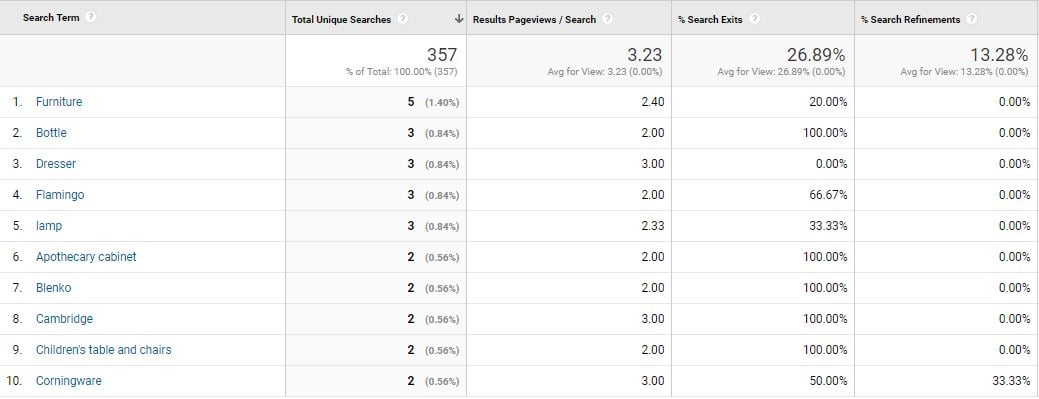
In a digital world where we are constantly looking for the next high performing idea or tactic, this may unlock another aspect of your strategy. So, let’s dig into the many things you can do with this data, with highlights that we feel are the five best uses of these site search metrics.
Creating Site Search Audience Segments
If you are utilizing Google Analytics, you have the capability to create audience segments that import directly to AdWords for paid search or display campaigns. The audience definitions tool found within the admin dashboard of analytics allows you to set conditions that gather specific search term variants and or search categories for a pool of users. Utilizing these segments, you can target these predetermined users with bid adjustments, product display ads, Gmail ad creative and much more. Since the users were actively searching on your site, their intent shows you they are likely a marketing qualified lead. The only caveat to this tactic is getting enough volume in your audience segments to run ads. Typically, AdWords prefers over 100 users in a segment, so don’t spread yourself too thin with multiple groups.
Unfortunately, Google Analytics remarketing pools cannot be utilized in Social channels, but rather are targeted based on the channels pixels. To create a remarketing segment with these platforms like Facebook, you will need to have a developer or site manager place pixels on pages that match certain URL parameters.
Identifying Potential New Campaigns Through Site Search
Pairing with audience segments, the next opportunity is new campaigns. As you can see from our example screenshot at the beginning of this post, we could conclude that on a monthly basis there are quite a bit of searches for furniture and variations of furniture on this example site. Looking for trends such as categories or products with enough volume may be a good monthly practice to energize new or current campaigns. We have found that this tactic works especially well within Social media where imagery plays a larger role, but audience segments are a bit harder to grasp due to pixel usage.
Update Your Site Layout and or Featured Calls To Action
Your campaigns aren’t the only optimization opportunities based on these metrics. Updating site navigation, home page sliders and calls to action across the site with the latest trends could pay dividends in seeing increases to onsite events, goals and engagement as the ease use for visitors increases. Our suggestion would be to look at these trends on a quarterly or semiannually basis to accrue enough data. This can be a great opportunity to introduce A/B testing with tools like Google Optimize in order to confirm your onsite theories.
Identify Product Opportunities or Pairings
Although this may be the most difficult to manage, onsite search gives you a chance to see what products and product pairings might be a good fit for your business. For instance, our antique store example saw an influx one month in Coca-Cola antiques which shows an area of opportunity for sales, or campaigns that highlight similar products like antique Pepsi signs & bottles to those user segments. Pairing these options in Facebook Carousel ads, Showcase shopping ads or the Google Display Network may be worth a test.
New Content Marketing Ideas With Site Search
The final tip is a long-term play in which search engine optimization tactics take the spotlight. Pillar content, offers, downloads and demos are additional areas of opportunity that can be updated with site search data. Building pillar content around specific topics that have shown a trend within site search will help with organic listings but also can land individuals on the right pages of the site. Typically, a user will use site search if they can’t immediately find what they are looking for. By using this long-term search engine optimization strategy, users may land organically on these pages which can cut down on the bounce rate and can also help with user experience.
As you can see, the utilization of site search can be a strong component in providing a first hand look at what users are expecting to find on your website. Paired with Search console keyword data or paid search query trends and insights, you have yourself a full-on set of data to draft an intent based campaign or site a/b test on. For more information on Digital marketing tips and optimization, contact THAT Agency today.





